When I first stepped onto Bari’s Maritime famous promenade, the sheer length of it and the sparkling Adriatic waters immediately caught my eye. The sea just seems to go on forever.
Bari, down in southern Italy, really stands at a crossroads—it’s where Eastern and Western maritime traditions have mingled for thousands of years. Bari’s maritime heritage is honestly one of Italy’s most fascinating, yet somehow overlooked, cultural treasures. Its strategic spot has made it a vital port for trade and cultural exchange since, well, ancient times.
But Bari’s maritime history isn’t only about ships and harbors. It’s a living story that you can feel in the city’s character. As I wandered along what locals call Italy’s longest promenade, I almost imagined the generations of sailors, merchants, and travelers who once passed through these waters.
This city’s unique position has turned it into a natural gateway—Italy to the Balkans, Western Europe to the Eastern Mediterranean.
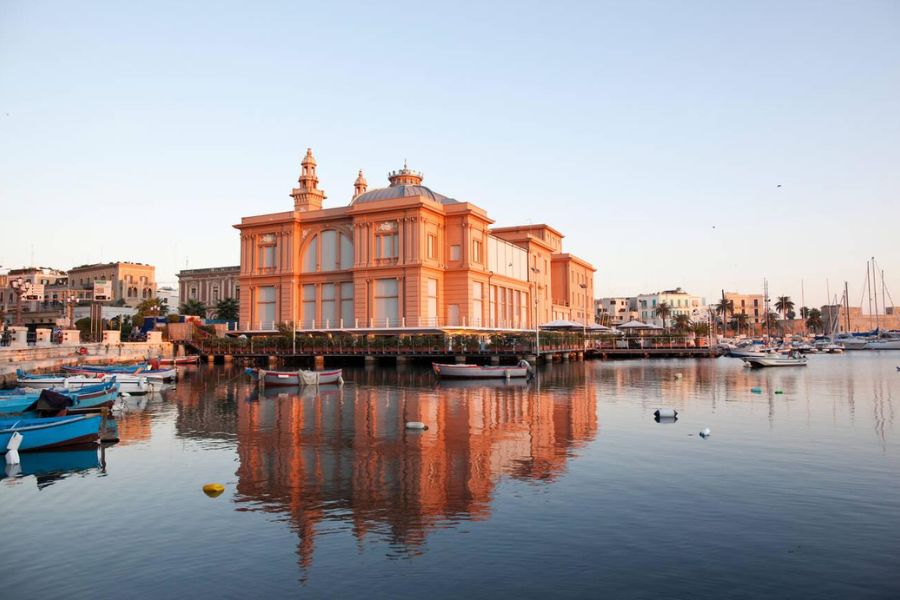
My interest in Bari grew after I read about the ancient shipping routes that linked this port to faraway lands. Like those 2,400-year-old Greek ships that once sailed here, Bari has survived centuries of change and still clings to its maritime roots.
The sea doesn’t just surround Bari—it shapes it, defines its culture, and still plays a big role in daily life. Sometimes in ways you barely notice.
Origins of Bari’s Maritime Legacy
Bari’s ties to the sea go back thousands of years. The city grew into an important maritime hub connecting East and West.
Ancient civilizations saw its potential, and early trading networks wove Bari into the fabric of Adriatic commerce.
Influence of Antiquity
When I first wandered through Bari’s ancient harbor, I felt the weight of its history stretching back to pre-Roman times. The natural harbor gave early settlers—Greeks at first, then Romans—a perfect spot to anchor down.
Archaeologists have found evidence that by the 3rd century BCE, Bari (then Barium) had already become a stopover for ships. The Romans saw the potential and built docks to help with navigation and trade.
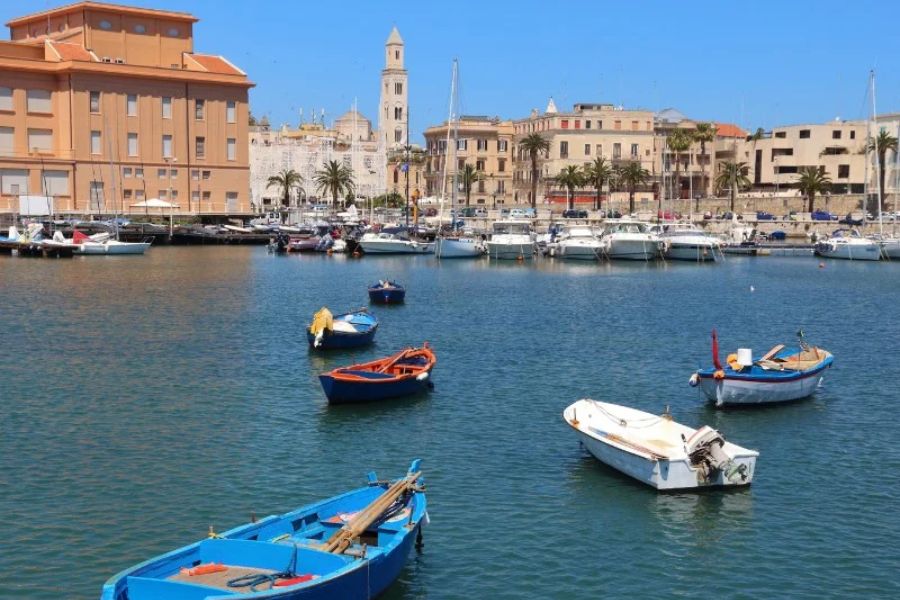
What really gets me is how sailors back then navigated using just the stars and some clever tricks. Greek mariners brought these skills, and Bari’s seafarers kept them alive for centuries.
Early Trade and Navigation
Strolling along Bari’s old waterfront, I could almost hear the clamor of merchants from Byzantium, North Africa, and the Levant. By the 9th century, Bari had become a major player in Mediterranean trade.
Shipbuilders in Bari crafted vessels for both defense and commerce. They picked up design ideas from both Eastern and Western traditions.
Arab navigators really kicked things up a notch between the 9th and 11th centuries. Local sailors learned to use astrolabes and early nautical charts, making sea travel safer and smarter.
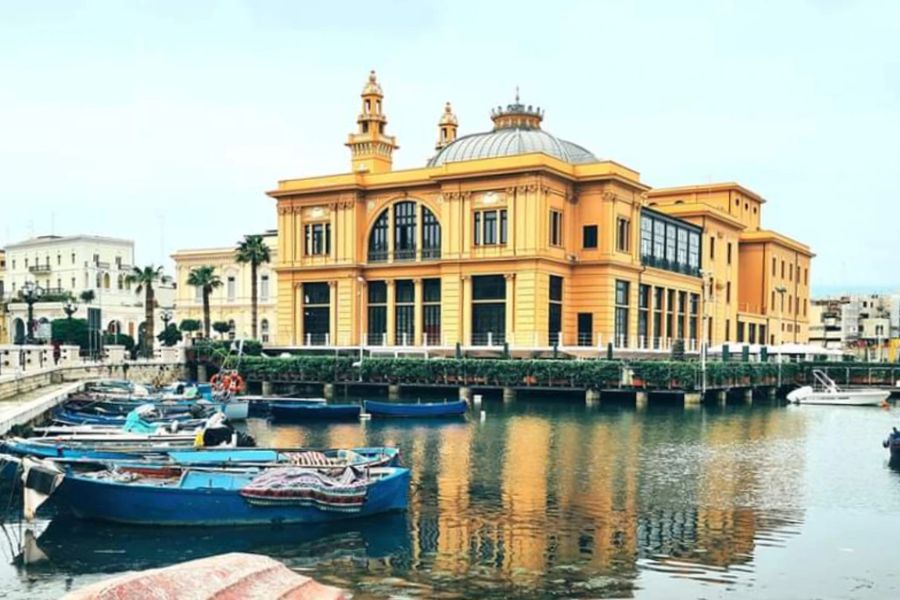
The trade networks from this era linked Bari with Constantinople, Alexandria, and Venice. These connections fueled the city’s prosperity for generations.
Navigating the Waters: Sailing and Shipwrecks
Bari owes so much to the waters that surround it. These seas have seen everything—trade, battles, and more than a few shipwrecks.
Sailing Routes and Techniques
Bari’s sailors figured out their own ways to handle the tricky Adriatic. I’ve read that local captains relied on star navigation and the seasonal winds to steer their ships.
The main routes tied Bari to Venice, Dubrovnik, and Constantinople. Most medieval Barese ships hugged the coast, since open-sea navigation was risky and the tools were pretty basic.
Here’s what they used:
- Compass roses for direction
- Leadlines to check depth
- Hand-drawn portolan charts to map coastlines and harbors
In the 15th century, Bari became a crucial stop on the spice route. Ships often lingered in the harbor, waiting for the right winds.
Historic Shipwrecks and Maritime Mysteries
The seabed near Bari hides dozens of wrecks—each with its own story. Archaeologists have identified at least 12 major shipwrecks, from Roman times right up to the 20th century.
One wreck, just off the coast, is a 16th-century merchant ship with ceramic jars and bronze cannons still inside. Local fishermen always seemed to know about it, long before archaeologists showed up.
Maritime archaeologists like James Delgado have studied these wrecks, piecing together trade and technology trends from the debris.
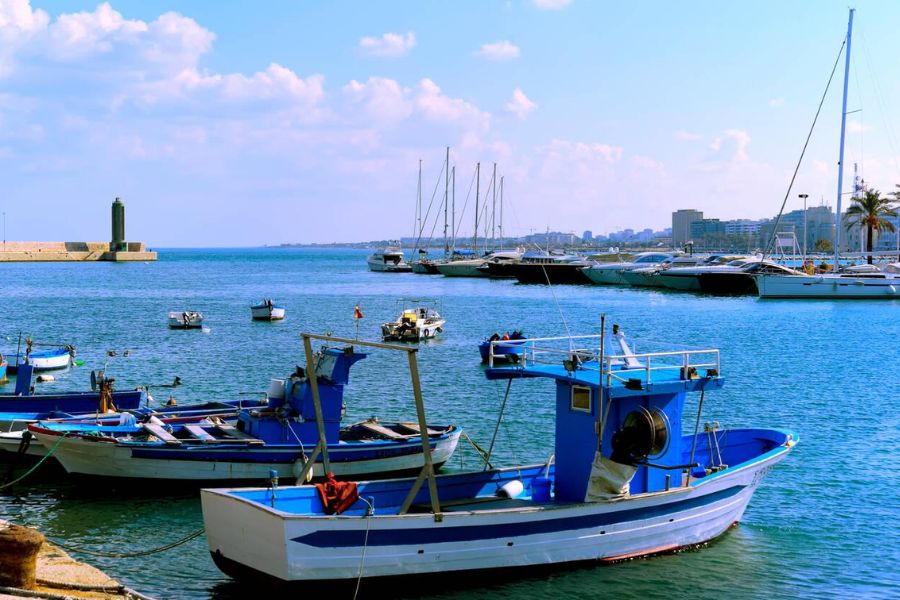
World War II left its mark too. Several naval ships, including the SS John Harvey, went down near Bari. That ship’s secret mustard gas cargo caused an environmental disaster when it exploded. Even now, these wrecks remind us how dangerous the sea can be.
Myths Born from the Sea
Bari’s waters have always inspired legends. I’ve listened to fishermen talk about La Donna del Mare, the Sea Woman, who appears before big storms.
A lot of locals trust in Saint Nicholas, Bari’s patron saint. Sailors keep little icons of him for luck. Old sea dogs tell tales of mysterious lights guiding lost ships home during rough voyages.
These beliefs show just how close Bari’s people feel to the sea:
- Watching the sea and birds for weather signs
- Blessing new boats before their first trip
- Leaving offerings for safe returns
Some of these rituals are still around. When I went out with a fishing crew, they did a quick blessing before we left the dock.
Bari as a Crossroads Between East and West
Bari’s spot on the Adriatic has made it a hub for centuries. Folks call it the “Gateway to the East,” and for good reason.
Trade with India and the Eastern World
It’s wild to think about Bari as a trading powerhouse. Walking through the old harbor, I can almost see the ships packed with goods from India and beyond.
The port brought in gold, silver, and copper from the East. These riches passed through Bari before spreading across Italy.
Local merchants made a fortune trading Italian products for spices, textiles, and crafts from the East. You can still see the influence in Bari’s buildings and food.
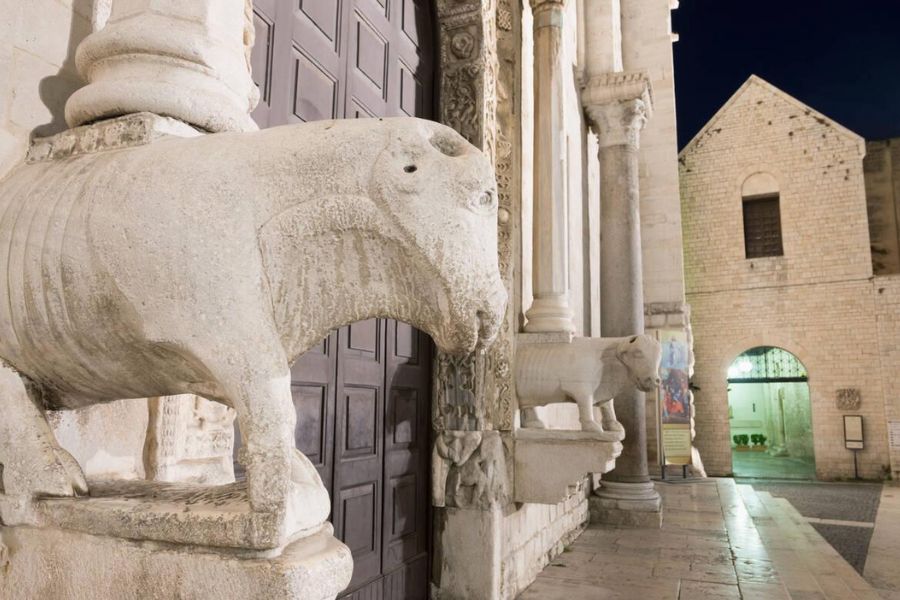
The San Nicola Basilica stands as a reminder of these connections. Every time I visit, I think about the pilgrims and traders who once flocked here from all over.
Connections with Brindisi and Other Maritime Nations
Bari never operated in isolation. I’ve looked into its partnership with nearby Brindisi, and together they formed a network that dominated Adriatic shipping.
These ports controlled much of the Mediterranean trade in iron and tin. Ships from Greece, Turkey, and North Africa regularly pulled into both cities.
Bari’s importance only grew in the Middle Ages, when it became a key crossroads for culture and commerce. The city’s museums are packed with artifacts that reflect these global ties.
Diplomatic ties with Venice and other maritime republics helped secure trade routes and keep Bari prosperous as a bridge between East and West.
Wartime Tides: Bari’s Role in Conflict
Bari’s harbor, right on the Adriatic, made it a hot spot during wartime—especially in World War II. The port became a stage for devastating naval battles that still shape local memory.
World War II Naval Impact
When Allied forces took Bari in 1943, they quickly turned the port into a vital supply hub. By December, over 30 Allied ships packed the harbor, loaded with ammunition, supplies, and fuel.
On December 2, 1943, German bombers launched a surprise raid. The Allies thought Bari was safe from attack, so the Luftwaffe caught them off guard.

Several ships took direct hits, including the SS John Harvey. That ship, carrying secret mustard gas bombs, exploded and released chemicals into the air and water. The rescue turned into chaos.
Casualties and Aftermath
The raid killed at least 1,000 people, both military and civilian, though some say the real number was higher. Mustard gas exposure caused strange symptoms that baffled doctors at first.
Many survivors suffered burns and breathing problems. Authorities kept the chemical weapons secret for decades, so the full story took a long time to come out.
After the disaster, the military changed security protocols. They improved air defenses and changed how ships docked to avoid clustering.
Doctors treating Bari’s victims developed new ways to handle chemical exposure—a small silver lining in a grim situation.
Warfare Stories from the Harbor
Fishermen still pull up wartime debris in their nets, even now. I met Giuseppe, whose father saw the raid firsthand. “The sky turned orange,” he told me. “The sea looked like it was on fire.”
Recent port expansion uncovered unexploded bombs, which had to be cleared by specialists.
Bari’s maritime museum keeps relics from the attack—a melted pocket watch, frozen at 7:30 pm, the moment the first bomb hit.
Every year, families lay flowers at a small memorial near the port, remembering the victims of what some call “the second Pearl Harbor.”
Cultural and Agricultural Footprints Along the Coast
Bari’s coastline feels like a living museum. Here, centuries of farming blend with cultural influences from all over the Mediterranean.
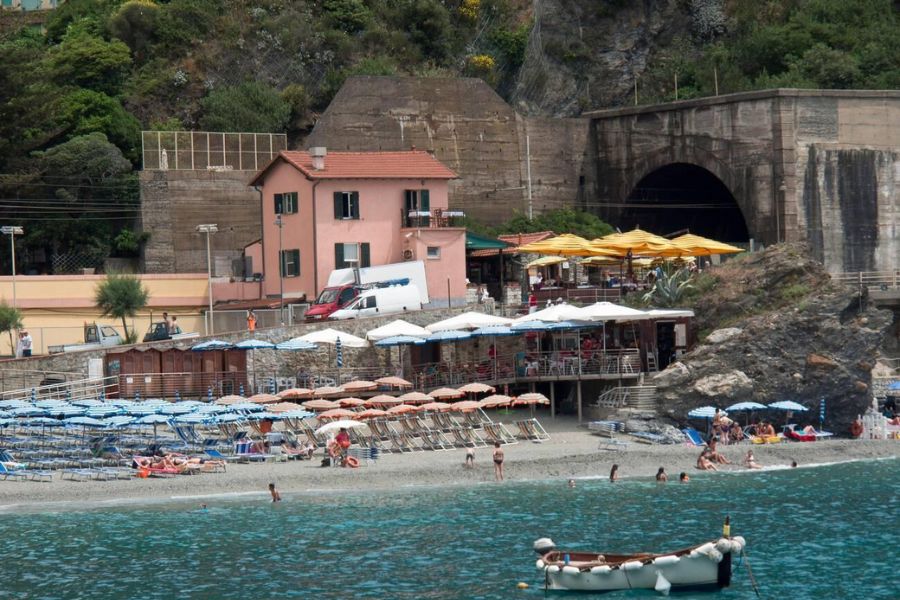
As I wander this lively region, I’m amazed by how the sea has shaped not just the land but the very soul of the local communities—their gardens, crops, and art.
Gardens by the Sea
I can’t help but stop and admire the coastal gardens along Bari’s shore. The unique climate lets these gardens flourish, mixing Italian gardening with Mediterranean flair.
Terraced gardens near the water grow rosemary, lavender, and tough succulents that thrive in salty air. Families have tended these plots for generations, adding splashes of green against the blue sea.
What I love most is how these gardens aren’t just pretty—they’re practical. Many mix edible plants with flowers, showing the Barese knack for combining beauty and utility.
Crops That Traveled the Waves
Bari’s fields tell a story of centuries of trade and exchange. Olive trees, first planted here over 2,000 years ago, are the backbone of the local kitchen and economy.
It surprised me to learn that tomatoes, eggplants, and citrus—now staples of Italian cooking—actually arrived through Bari’s busy port. Maritime trade brought these crops from East to West.
Durum wheat, the key to Puglia’s pasta, grows in the coastal plains around Bari. The mineral-rich soil, thanks to the sea, gives local produce a flavor chefs across Italy love.
From Rice to Arts: Exchanges of Influence
Trade through Bari’s port shaped more than just food. Rice farming techniques, brought in from the East during the Middle Ages, turned wetlands into productive fields.
Art got a boost too. Local pottery blends Byzantine and Italian styles, with blue patterns inspired by both Islamic and European traditions.
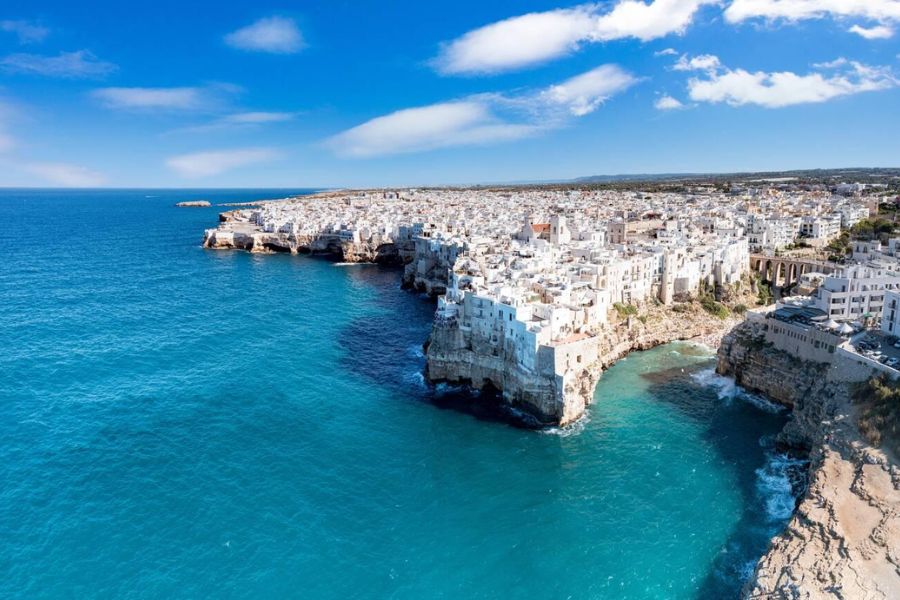
Music and dance along the coast show the same cultural mix. The traditional tarantella borrows rhythms and moves from Middle Eastern and Greek dances, creating something unmistakably Barese.

